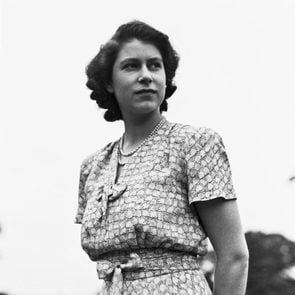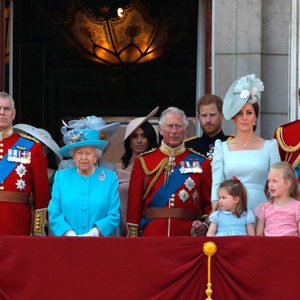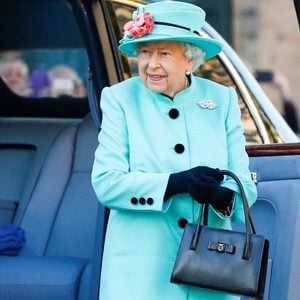Queen Elizabeth’s Funeral: The Details and Traditions, Explained
Updated: Nov. 29, 2023
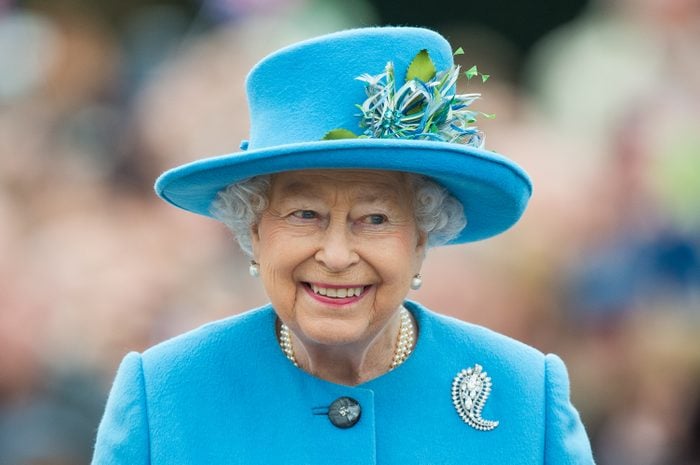
From the schedule and guest list of Queen Elizabeth's royal funeral to the fascinating traditions it incorporated, here's what you need to know about the biggest funeral in recent history
“London bridge is down.” These strange words were some of the first whispered after Queen Elizabeth’s death, on Sept. 8, 2022. It was a code that meant it was time to implement Operation London Bridge, the intricate plan for Queen Elizabeth’s funeral. The royal funeral plan, which was first created in the 1960s, covered everything from the announcement of her death, official mourning periods and practices to the details of her state funeral, where is Queen Elizabeth buried and even the steps to make sure Prince Charles became king. Over the course of Queen Elizabeth II‘s 70 years on the throne, it was revised numerous times.
While it may sound dark to plan one’s funeral decades in advance—and as a military operation, no less—it allowed the royal family to focus on mourning while others took care of the practical and official details. This isn’t unusual, and nearly every royal has a similar plan. (Operation Tay Bridge, the plan for the queen mother’s death, was used as the basis for Princess Diana’s funeral.) But this funeral was on a much grander scale than anything we’ve seen before.
“This [was] the first state funeral since Winston Churchill’s, over half a century ago,” says Nicoletta Gullace, PhD, an expert on the royal family and a British historian at the University of New Hampshire. “The queen played a big part in planning her own funeral, so there is rich symbolism and meaning in even the smallest details.”
Here’s everything you need to know about the royal funeral—from the crown jewels and traditions featured at the ceremony to who was invited (and who wasn’t). While the world may have been watching for drama among the queen’s grandchildren and other members of the royal family tree, they were also paying their respects to England’s longest-reigning monarch.
When was Queen Elizabeth’s funeral?
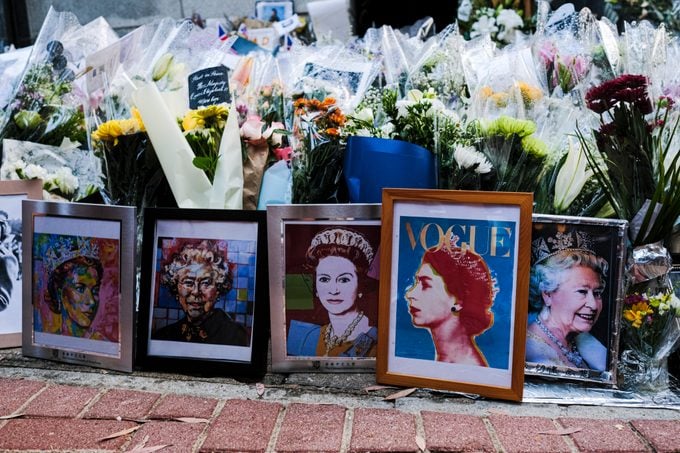
Queen Elizabeth’s funeral took place on Monday, Sept. 19, 2022. It was held at 11 a.m. BST in England—or 6 a.m. East Coast time in the United States. It was televised and streamed live on the internet via the BBC, with continuous updates and recaps on the BBC news website and BBC radio throughout the day. Americans could also watch it live on various U.S. networks, including NBC, ABC and CNN.
Considering that nearly 50 million people watched Prince Harry’s 2018 wedding to Meghan Markle on live TV and more than 1 billion watched it via other means, it was safe to assume that the queen’s funeral would be a truly worldwide event, garnering even more views. While viewership numbers aren’t in yet, experts estimated prior to the funeral that more than 4 billion people around the globe would be watching.
What did the pre-funeral services entail?
In the week after her death, Queen Elizabeth’s coffin took quite the tour, starting at Balmoral Castle in Scotland, where she died. From there, it was moved to the Scottish capital of Edinburgh, where she was honored for 24 hours, and then flown to Buckingham Palace. On Wednesday, at precisely 2:22 pm BST, the procession to Westminster Hall began. Why the oddly specific time? It takes exactly 38 minutes to walk from Buckingham Palace to Westminster Hall—yet another example of the meticulous level of detail in the planning of the royal funeral, says Gullace.
Queen Elizabeth lay in state from Wednesday, Sept. 14, until the morning of the funeral. The arrival of her coffin was greeted by Big Ben tolling before it was carried in by a carefully selected group of soldiers and placed on a decorated wooden framework, called a Catafalque. The Archbishop of Canterbury conducted a short service, which was attended by all her children and grandchildren. Prince William and Prince Harry even walked in side by side, while Princess Kate and Meghan Markle arrived by car, quashing rumors that Meghan might not attend due to her strained relationship with the royal family.
Who could attend the queen’s viewing?
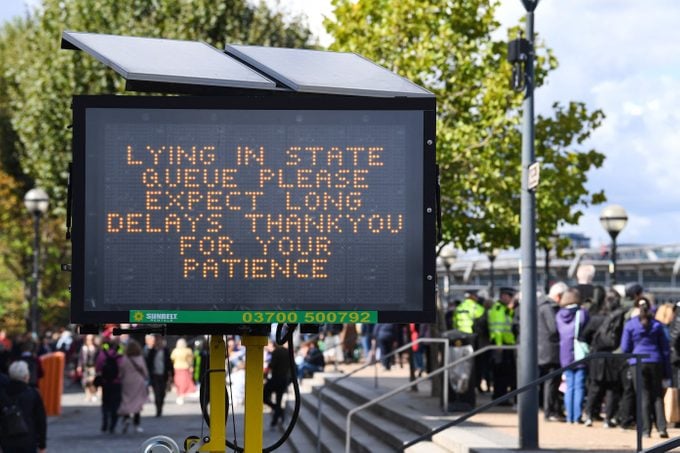
The queen’s body lay in state for four days until the day of the funeral, allowing the public to pay their respects to the U.K.’s longest-reigning monarch. Westminster Hall was open for public viewing for 24 hours a day, until 6:30 a.m. local time on Monday, the day of the funeral. Within an hour of the doors opening, the line was nearly three miles long. It was a solemn occasion, and the line (or queue) was reportedly very quiet and orderly.
Those attending the viewing were asked to “dress in somber clothing.” This was a way to show respect to the queen’s memory, of course, but it also helped the public feel like they were a part of the funeral in a personal way. This was intended to make them feel more connected to the monarchy and ensure their continuing support, says Gullace.
What happened on the day of the royal funeral?
The procession to Westminster Abbey
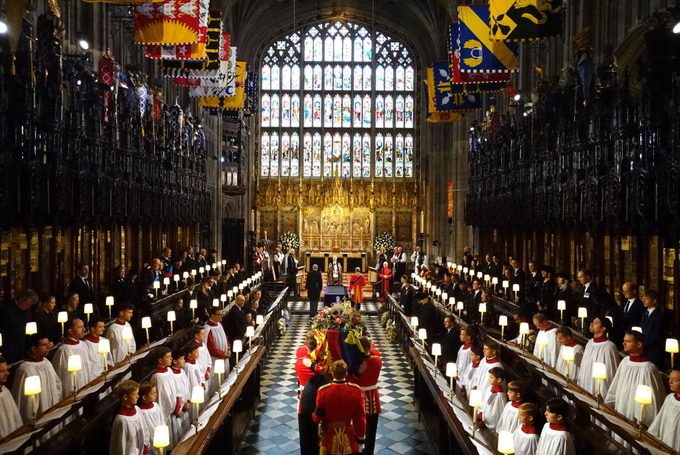
On Monday morning, the coffin was taken by naval carriage from Westminster Hall to Westminster Abbey as the royal family, including the newly crowned King Charles III, followed in procession for the three-minute walk. King Charles and his wife, Queen Consort Camilla, were first in line, followed by Elizabeth’s other children and then her grandchildren. A few of the queen’s older great-grandchildren—Prince George and Princess Charlotte, as well as Mia Tindall and Savannah and Isla Phillips—were also in attendance.
The coffin was then carried through the length of the Abbey and placed on a platform near the front of the chapel. This is where Queen Elizabeth wed Prince Philip and also where her coronation was held.
The seating of guests
Guests were seated to the left, right and in front of the platform. The less-important guests were seated first and then rose as the casket was carried in. The most important guests, including the royal family, followed the casket in before taking their seats closest to the platform.
“Funeral seating has a protocol that must be followed, based on the centuries-long precedents set,” says Gullace. “The family will enter last as a sign of their rank and also so that all eyes will be on them.”
There’s always rumored drama about who will be seated where, and it’s important to remember that none of the details are left to chance. Each person is placed in a specific spot, she explains, adding that the reasons can be political or social. For instance, the president of Palestine and the president of Israel would likely be seated far apart. While there was speculation that Prince Harry and Meghan might sit separately from the rest of the family, that didn’t happen. After all, one of the most important things to the monarchy is to show a united front. The couple was seated in the second row, directly behind King Charles and Camilla.
The service
The queen’s state funeral service began at 11 a.m. BST (6 a.m. ET) at Westminster Abbey. The last time a British monarch’s funeral was held in the Abbey itself was 262 years ago, for King George II.
Justin Welby, the Archbishop of Canterbury, conducted a short service assisted by the Very Reverend Dr. David Hoyle, Dean of Westminster. The funeral service lasted about an hour.
After the funeral
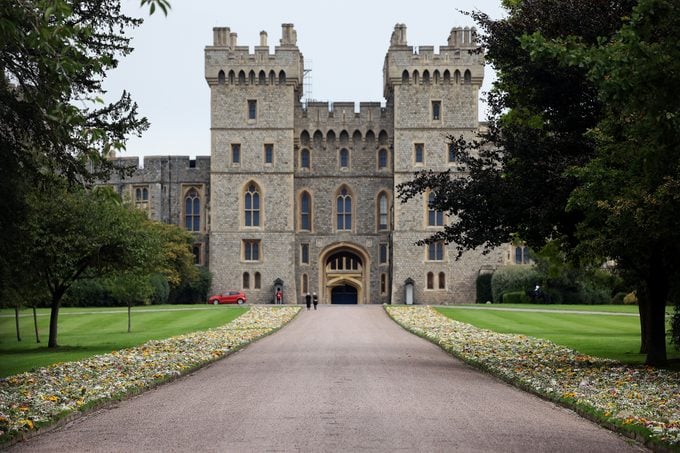
There was a national two minutes of silence observed at midday.
After the service, the coffin was carried out of the Abbey, placed back on the carriage and taken to Wellington Arch, where it was put in a hearse. Even the hearse was symbolic, finished in a “royal claret” color to show royalty, and was followed by a custom-designed Jaguar Land Rover. The queen’s coffin made its final journey from the Arch to Windsor Castle via a route known as the Long Walk. The family service and interment was then held at St. George’s Chapel in Windsor Castle.
Onward to Windsor
Upon arriving at Windsor Castle, the coffin was transported into St. George’s Chapel, where there was a small family service and the coffin was lowered into its final resting place, in the Royal Vault under the quire.
Queen Elizabeth II was buried next to Prince Philip, her husband of more than 70 years, who died in 2021. Her parents, King George VI and Queen Elizabeth the queen mother, as well as Elizabeth’s sister, Princess Margaret, are also interred at the King George VI Memorial Chapel, which is part of St. George’s Chapel.
Who attended the funeral?
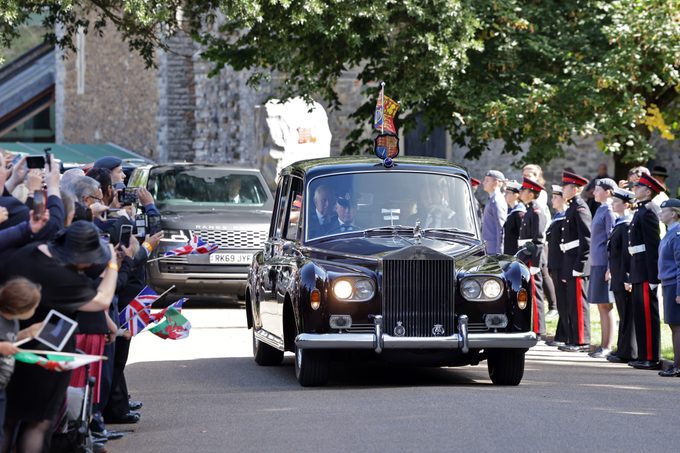
Around 2,000 guests attended Queen Elizabeth’s funeral, and that number included approximately 500 heads of state and other dignitaries. (Queen Elizabeth’s corgis didn’t attend, but they did make an appearance, along with one of her ponies, during the funeral procession in a sweet tribute!)
King Charles III and Queen Consort Camilla were front and center at the royal funeral, along with Elizabeth’s other children and their respective partners. Elizabeth’s grandchildren were also present with their partners—including Prince William and Kate Middleton, as well as Prince Harry and Meghan Markle, of course. Prince George and Princess Charlotte sat in the front row with their parents; Prince Louis did not attend, and neither did Archie and Lilibet.
U.S. President Joe Biden and first lady Jill Biden had a special place of honor, due to the United States’s special relationship with Britain, says Gullace. Prime Minister Liz Truss represented the U.K. and read a prayer during the funeral. And presidents and other rulers representing members of the G7, the U.N. and the Commonwealth—including President Emmanuel Macron of France, Emperor Naruhito of Japan and Canadian Prime Minister Justin Trudeau—were also there.
As Gullace notes, this was “a must-not-miss event,” so it was no surprise that the heads of state from nearly every major country in the world were in attendance.
Who didn’t attend the funeral?
There were some big names missing from the guest list. Most notable was Vladimir Putin, current president of Russia, due to the ongoing proxy war with the West in Ukraine, says Gullace. Representatives from Iran and Myanmar also were not invited. Surprisingly, former U.S. presidents, including Donald Trump and Barack Obama, didn’t earn invites either. While the official line is that it had nothing to do with politics and everything to do with limited seating, Gullace notes that the queen famously loved the Obamas and didn’t care for Trump, so perhaps both were stricken from the guest list to avoid ruffling feathers.
Ukrainian President Volodymyr Zelenskyy and Chinese President Xi Jinping reportedly declined to attend.
What royal traditions did the funeral incorporate?
Queen Elizabeth’s royal funeral traditions weren’t just about “doing things as they’ve always been done.” They had a very practical and even subliminal purpose. Britain has one of the longest-functioning monarchies in the world, and calling attention to that history is an important way for the current monarch to retain mystique and power, says Gullace. It’s a historical type of PR—using ancient visual symbols makes it understandable and impressive to people all over the world, even those who don’t speak English.
“These traditions are designed to provoke feelings of awe, grandeur, importance and mystery,” she explains. “This gives legitimacy to the new monarch—something that is more important than ever as respect for royals has waned in recent years.”
The coffin
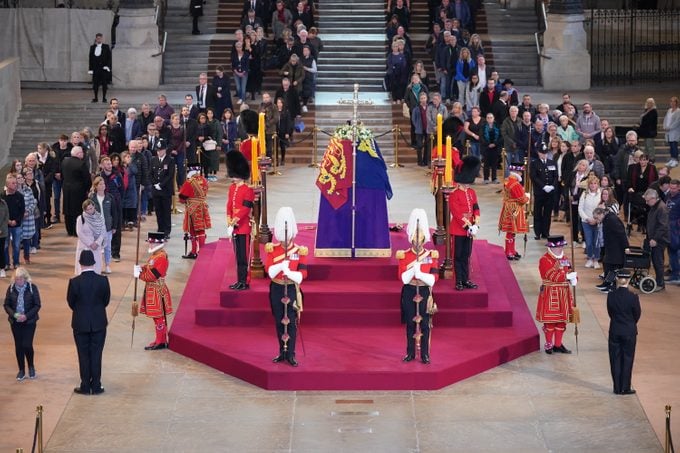
The casket was made more than 30 years ago from rare English oak and is lined with lead, as are most royal coffins, according to Leverton & Sons, the funeral directors to the royal household. The lead prevents air and moisture from getting inside the casket, preserving the body longer. The same company also made coffins for Prince Philip and Freddie Mercury.
The flag
During the funeral, the Royal Standard flag was draped over the coffin. The colorful Standard is divided into four sections: England (three yellow lions on red, and it’s actually on the flag twice), Scotland (red lion rampant on yellow) and Ireland (harp on blue). “This is one of the most important symbols you’ll see, as the United Kingdom has been feeling decidedly less united lately. Scotland and Ireland especially have large separatist movements happening, and it’s a major concern that the U.K. will disintegrate without the queen holding it together,” says Gullace. “King Charles’s first priority in office will be to shore up the bonds within the U.K.”
The crown
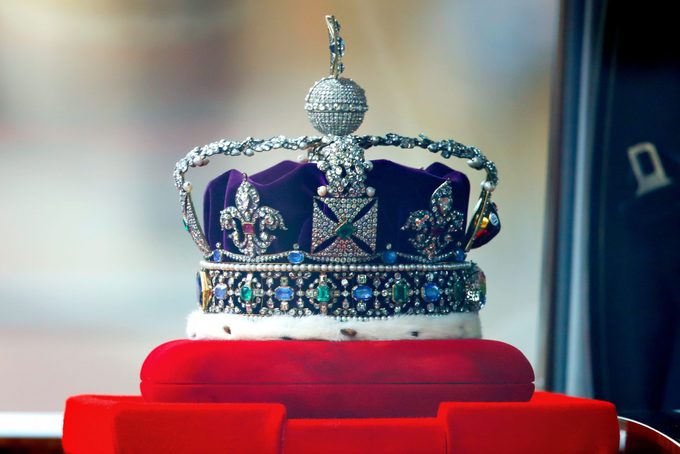
The Imperial State Crown, one of the crown jewels, lay atop the casket. The crown was created for Elizabeth’s father and showcases some of the most famous (and famously controversial) gems in the world. The main attraction is the Cullinan II, a whopping 317.4-carat diamond cut from the world’s largest diamond. It also features “the Black Prince’s Ruby,” the gem that Henry V reportedly wore into battle in 1415.
The orb and sceptre
A prominent feature in pictures of the queen’s coronation is the orb she holds in one hand and the sceptre she holds in the other. These aren’t mere objects—they were forged in 1661 and handed down to the ruling monarch for centuries. The Sovereign’s Sceptre is three feet long and represents the monarch’s power in the secular world. It features the 530-carat Cullinan I diamond (another piece of the infamous diamond). The Sovereign’s Orb is an 11-inch hollow gold sphere topped with a cross to represent the monarch’s power in the Christian world. Before the funeral, they were placed atop her casket.
The flowers
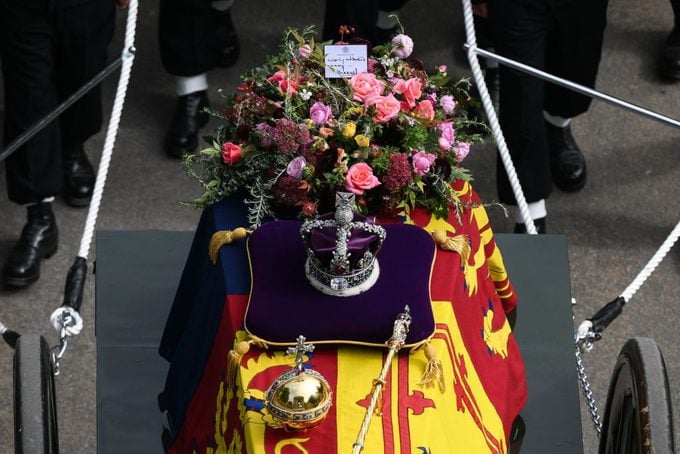
Prominently featured on the coffin was a wreath of flowers—including rosemary, English oak and myrtle (cut from a plant grown from myrtle in the queen’s wedding bouquet) and various gold, pink and deep burgundy flowers, with touches of white, cut from the gardens of royal residences, according to the royal family’s official Twitter account. Queen Elizabeth’s favorite flower, however, was lily-of-the-valley.
King Charles also included a personal note on top of the coffin, among the flowers, to his beloved mother. It read: “In loving and devoted memory. Charles R.” The “R” is an abbreviation for Rex, which means king in Latin.
The mourning bands
As a visual symbol of grief, members of the royal family wore black with “mourning bands,” three-quarter-inch-wide fabric bands, on their left arms. The exception was men in military dress. Kate and Camilla wore traditional black netted mourning veils.
The jewelry
Jewels are often used by British royalty as a nonverbal way to show status, respect, memory and even sometimes anger, says Gullace. At the Westminster Hall ceremony, Meghan accessorized with a pair of pearl-and-diamond drop earrings gifted to her by Queen Elizabeth II during their first solo outing together in June 2018. Similarly, Kate Middleton wore a diamond-and-pearl leaf brooch given to her by the queen, along with a set of pearl earrings that had belonged to her mother-in-law, Princess Diana. On the day of the funeral, Kate wore a four-strand pearl choker with diamonds that once belonged to Queen Elizabeth and was also worn by Princess Diana.
Pearl jewelry is a royal funeral tradition that dates back to 1861. Queen Victoria started wearing these more subdued gems after the death of her husband, Prince Albert, and she wore them, along with black mourning clothing, for the next 40 years, until her death.
Camilla, on the other hand, chose what experts are calling “a very personal tribute” from the royal jewelry collection. The heart-shaped Hesse Diamond Jubilee Brooch, a gift to Queen Victoria from her grandchildren, was out of sight for more than a century until it was worn by Camilla in 2005. It resurfaced on subsequent state visits and during Queen Elizabeth’s Diamond Jubilee celebrations in 2012. Meanwhile, 7-year-old Princess Charlotte paid tribute to her great-grandmother by wearing a delicate diamond brooch shaped like a horseshoe that Elizabeth had given her as a gift. Charlotte and Queen Elizabeth shared a love of horses.
The music
Music during the royal funeral service came from the Order of the Burial of the Dead from the Book of Common Prayer, first published in 1549. Texts, called Funeral Sentences, were broken up into three parts: Opening Sentences, sung when the priests met the body at the church; Graveside Sentences, when the body was buried or interred; and the Last Sentence, sung after the priest threw earth onto the coffin.
The final burial tradition
After a monarch’s coffin is lowered into the Royal Vault, it is tradition to “break the stick.” The Lord Chamberlain, a high-ranking officer of the royal household, broke his stick—a white stave given to him as part of his office. This breaking symbolized the end of their service to the queen.
What was Queen Elizabeth buried with?
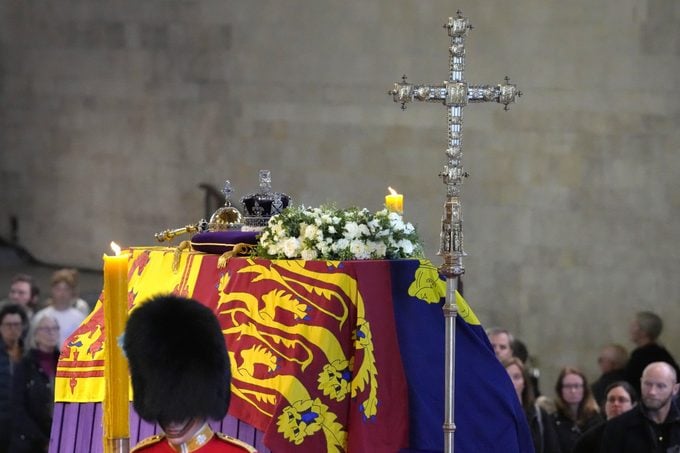
Queen Elizabeth’s net worth is astonishing, and it includes her legendary private jewelry collection, which contains more than 300 items (including 98 brooches, 46 necklaces, 34 pairs of earrings, 15 rings, 14 watches and 5 pendants). Their value is priceless. That said, royal watchers speculate that the jewels will be passed down to her heirs instead of buried with her. It’s unknown whether the gifted items will include her engagement ring—a three-carat round solitaire diamond with five smaller diamonds set on each side of a platinum band. The ring holds special significance, as Prince Philip had it designed for her.
The family likely added some personal mementos to be interred with her in the coffin, although it remains to be seen what those might have been. That very private time wasn’t televised. However, Prince Philip’s funeral was the first to allow a broadcast of the casket being lowered into the vault, and Queen Elizabeth’s funeral followed suit.
What happened after the funeral?
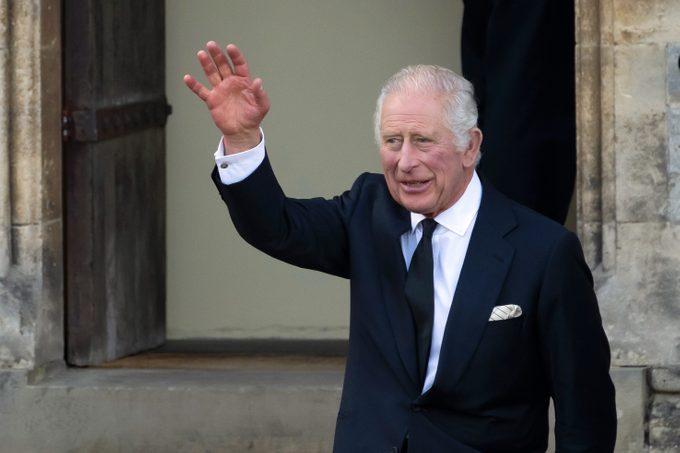
The dates of the queen’s funeral was a national bank holiday, and the same will be true for Charles’s upcoming coronation. This has come with some controversy, as even some types of medical care were (and will be) closed. Another concern was the economic cost of closing the country for the funeral, which was thought to be immense, particularly during a period of high inflation.
On a more personal level, all members of the royal family will observe a period of mourning for one week after the funeral, according to Buckingham Palace. Flags at royal residences will remain at half-mast, and family members will continue to wear black.
Next, find out more about the queen, from the food she ate every day to how Queen Elizabeth and Prince Philip were secretly related.
Sources:
- Nicoletta Gullace, PhD, expert on the royal family and British historian at the University of New Hampshire
- Royal.uk: “Arrangements for the Funeral of Her Majesty The Queen”
- BBC: “Queen’s funeral plans: What will happen on the day”
- Reuters: “Factbox: World leaders to attend Queen Elizabeth’s funeral”
- Reuters: “Factbox: Plans for the run-up to Queen Elizabeth’s funeral”
- The Times UK: “The Queen’s oak coffin was ready 30 years ago”
- NPR: “Operation London Bridge”
- Washington Post: “Understanding the symbolism in the queen’s funeral processions”

